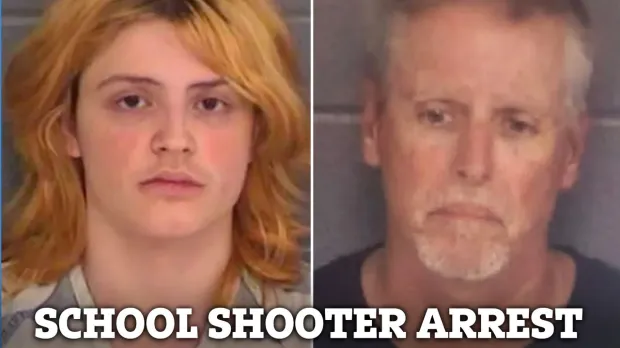The tragic events at Apalachee High School in Winder, Georgia, on September 4, 2024, shocked the community and raised difficult questions about why a 14-year-old boy, Colt Gray, would commit such a senseless act of violence. Four people—two students and two teachers—lost their lives, and several others were injured. While the issue of gun access is undeniably central to this tragedy, a broader conversation is necessary to understand why young people are turning to violence, why parents are failing to intervene, and why guns are becoming so accessible to minors.
Why Are Children Committing These Acts?
One of the most pressing questions is what drives children like Colt Gray to commit such violent acts. While easy access to firearms is part of the equation, it’s important to examine the deeper emotional and psychological factors that might be at play. Adolescence is a time of significant emotional and social development, and many teenagers who resort to violence often feel isolated, misunderstood, or powerless. These emotions can sometimes manifest into violent behavior if left unaddressed.
The rise of social media has also played a role, offering platforms where young people can express frustrations, engage in harmful communities, or even find validation for their darkest thoughts. Early signs of distress, such as threats or violent rhetoric online, are often ignored or dismissed until it is too late. In Gray’s case, reports surfaced that he had made threats online prior to the shooting, indicating a possible cry for help that was tragically overlooked.
Why Aren’t Parents More Involved?
The role of parents in preventing such tragedies cannot be understated. In this case, Colt Gray’s father, Colin, gave his son a firearm as a gift, failing to recognize or properly address his son’s emotional state. This incident raises important questions about parental engagement. Why are some parents disconnected from their children’s mental health and emotional well-being?
There are many reasons why parents may not be as involved as they should be. Busy work schedules, economic pressures, and single-parent households can all contribute to a lack of time and emotional bandwidth. However, these factors do not excuse a failure to monitor warning signs. When parents ignore behavioral red flags—whether it’s changes in mood, violent ideation, or social isolation—they risk allowing these issues to fester.
Furthermore, many parents may not be equipped with the knowledge or resources to address mental health issues in their children. There is often a stigma associated with seeking help, especially for young boys, which can lead to untreated emotional issues that may later result in violence. A key solution lies in ensuring that parents have the tools and support they need to engage with their children effectively and respond to early signs of distress.
Why Are Children Carrying Guns?
Another critical aspect of the problem is how easily children like Colt Gray can access firearms. The fact that Gray’s father gave him an AR-15-style rifle as a Christmas gift illustrates a widespread problem: guns are becoming commonplace in many households, and not all parents take the necessary precautions to ensure they are safely stored.
Many advocates argue for stronger gun laws that would require parents to be held accountable when their children commit crimes with family-owned firearms. This could include mandatory safe-storage laws or penalties for parents who provide minors with unsupervised access to guns. The goal is to ensure that firearms remain out of reach for young people who are not mature enough to handle the responsibility.
But beyond gun safety measures, we must also examine why young people are drawn to firearms in the first place. For some, guns may represent power, control, or an escape from feelings of vulnerability. For others, exposure to violence in media or online spaces can desensitize them to the real-life consequences of gun violence. Addressing the root causes of this fascination with guns is essential in preventing future tragedies.
Parental Accountability: A Call for Greater Responsibility
The Apalachee High School shooting brings to light the critical need for laws that hold parents accountable for their children’s actions, particularly when it involves firearms. If a child can access a weapon so easily, parents must take responsibility for failing to secure that weapon or for providing it in the first place. However, accountability goes beyond securing firearms—it involves creating a culture where parents are actively engaged in their children’s lives, mentally and emotionally.
In today’s fast-paced world, it’s easy for parents to lose touch with what is happening in their children’s lives. But when signs of distress go unnoticed, the consequences can be deadly. Parents need to make time to have open, honest conversations with their children, to check in on their mental health, and to pay attention to warning signs. Communities, schools, and social services should also work together to provide parents with the support they need to address these issues early on.
The Way Forward
The Apalachee High School shooting is not just a gun control issue—it is a reflection of a broader crisis in how we raise and support our children. While stricter gun laws are essential, they must be accompanied by efforts to address mental health, social isolation, and parental disengagement. We need a cultural shift that encourages parents to be more involved, aware, and accountable.
Children should never feel like violence is their only option, and parents should never be in a position where they are unaware of the struggles their children are facing. The solution lies in a multifaceted approach—one that includes tougher gun laws, mental health awareness, and a renewed commitment to parental engagement. Only then can we hope to prevent future tragedies like the one at Apalachee High School.
